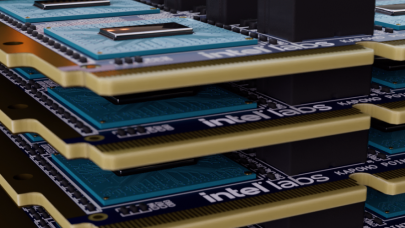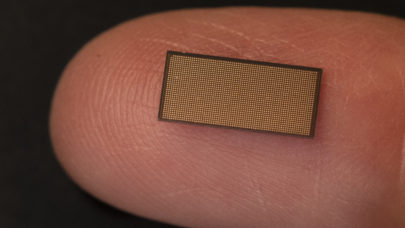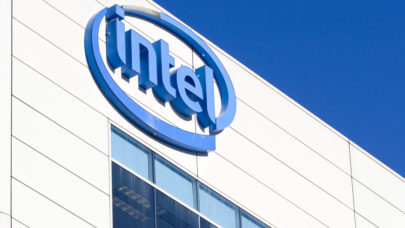
Intel Labs Launches Neuromorphic ‘Kapoho Point’ Board
September 28, 2022
Over the past five years, Intel has been iterating on its neuromorphic chips and systems, aiming to create devices (and software for those devices) that closely Read more…

Intel Unveils Loihi 2, Its Second-Generation Neuromorphic Chip
September 30, 2021
Four years after the introduction of Loihi, Intel’s first neuromorphic chip, the company is introducing its successor. According to Intel, the second-generation chip will provide faster processing, higher resource density and greater energy efficiency. Intel is also introducing Lava, a software framework for neuromorphic computing. Read more…

Argonne Turns to Insects for Neuromorphic Computing
August 13, 2021
The burgeoning field of neuromorphic computing – arguably led by Intel’s “Loihi” chip – leverages virtualized neurons to mimic the behavior of the bra Read more…

Intel Teams with National Labs for Major Leaps in Semiconductors, Neuromorphics
October 2, 2020
After facing setbacks in its semiconductor execution, including a delay in its 7nm node, Intel is announcing two partnerships with U.S. national labs that reaffirm its commitment to advanced computing: first, a partnership with the DOE and the national labs that focuses on developing next-generation semiconductors and manufacturing techniques; and second... Read more…

Neuromorphic Computing to Assist Children Who Use Wheelchairs
August 20, 2020
Intel’s neuromorphic chip has learned to smell, learned to touch – and now, it’s here to help. The chip, which mimics the behavior of the human brain, is Read more…

Get a Grip: Intel Neuromorphic Chip Used to Give Robotics Arm a Sense of Touch
July 15, 2020
Moving neuromorphic technology from the laboratory into practice has proven slow-going. This week, National University of Singapore researchers moved the needle Read more…

Intel’s Neuromorphic Chip Scales Up (and It Smells)
March 18, 2020
Neuromorphic chips attempt to directly mimic the behavior of the human brain. Intel, which introduced its Loihi neuromorphic chip in 2017, has just announced that Loihi has been scaled up into a system that simulates over 100 million neurons. Furthermore, it announced that the chip smells. Read more…

- Click Here for More Headlines

Whitepaper
Transforming Industrial and Automotive Manufacturing
In this era, expansion in digital infrastructure capacity is inevitable. Parallel to this, climate change consciousness is also rising, making sustainability a mandatory part of the organization’s functioning. As computing workloads such as AI and HPC continue to surge, so does the energy consumption, posing environmental woes. IT departments within organizations have a crucial role in combating this challenge. They can significantly drive sustainable practices by influencing newer technologies and process adoption that aid in mitigating the effects of climate change.
While buying more sustainable IT solutions is an option, partnering with IT solutions providers, such and Lenovo and Intel, who are committed to sustainability and aiding customers in executing sustainability strategies is likely to be more impactful.
Learn how Lenovo and Intel, through their partnership, are strongly positioned to address this need with their innovations driving energy efficiency and environmental stewardship.
Download Now
Sponsored by Lenovo
Whitepaper
How Direct Liquid Cooling Improves Data Center Energy Efficiency
Data centers are experiencing increasing power consumption, space constraints and cooling demands due to the unprecedented computing power required by today’s chips and servers. HVAC cooling systems consume approximately 40% of a data center’s electricity. These systems traditionally use air conditioning, air handling and fans to cool the data center facility and IT equipment, ultimately resulting in high energy consumption and high carbon emissions. Data centers are moving to direct liquid cooled (DLC) systems to improve cooling efficiency thus lowering their PUE, operating expenses (OPEX) and carbon footprint.
This paper describes how CoolIT Systems (CoolIT) meets the need for improved energy efficiency in data centers and includes case studies that show how CoolIT’s DLC solutions improve energy efficiency, increase rack density, lower OPEX, and enable sustainability programs. CoolIT is the global market and innovation leader in scalable DLC solutions for the world’s most demanding computing environments. CoolIT’s end-to-end solutions meet the rising demand in cooling and the rising demand for energy efficiency.
Download Now
Sponsored by CoolIT
Advanced Scale Career Development & Workforce Enhancement Center
Featured Advanced Scale Jobs:
HPCwire Resource Library
HPCwire Product Showcase
© 2024 HPCwire. All Rights Reserved. A Tabor Communications Publication
HPCwire is a registered trademark of Tabor Communications, Inc. Use of this site is governed by our Terms of Use and Privacy Policy.
Reproduction in whole or in part in any form or medium without express written permission of Tabor Communications, Inc. is prohibited.
























